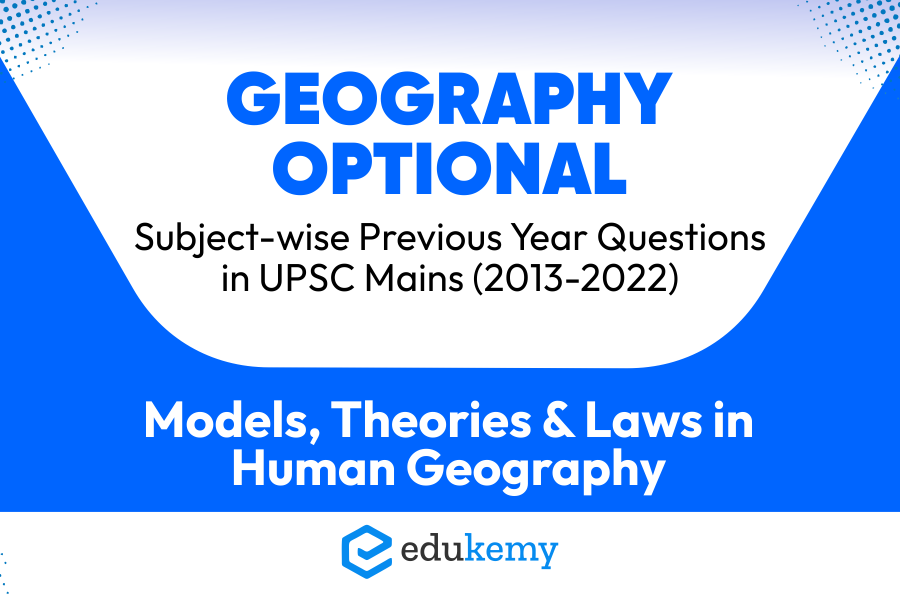
Models, theories, and laws are important tools in human geography, providing frameworks for understanding and explaining the complex relationships between human societies, the natural environment, and the built environment.
Models are simplified representations of complex phenomena, used to help us understand and analyze patterns and processes in human geography. They typically involve a set of assumptions, variables, and relationships between variables, and are often used to make predictions or test hypotheses. Examples of models in human geography include the concentric zone model of urban structure, the gravity model of migration, and the bid rent theory of land use.
Theories are broader explanations of the underlying causes and dynamics of human geography phenomena. They are often based on empirical research and provide a framework for understanding complex relationships and patterns. Examples of theories in human geography include the environmental determinism hypothesis, which suggests that human behavior and culture are largely determined by the physical environment, and the cultural ecology theory, which proposes that the relationship between humans and the environment is shaped by culture and social systems.
Laws in human geography are generalizations that describe consistent patterns or relationships between variables. They are often derived from empirical research and are considered to be widely applicable across different contexts. Examples of laws in human geography include Zipf’s law, which describes the relationship between the size of a city and its rank in the urban hierarchy, and Tobler’s first law of geography, which states that everything is related to everything else, but near things are more related than distant things.
Contents
- 1 Model, Theories & Laws in Human Geography Previous Year Questions (UPSC CSE Mains Geography Optional)
- 2 Frequently Asked Questions (FAQs)
- 2.1 1. What is the significance of studying Geography Optional Subject-Wise Previous Year Questions in UPSC Mains, specifically focusing on Models, Theories, and Laws from 2013 to 2022?
- 2.2 2. How can the analysis of Geography Optional Subject-Wise Previous Year Questions in UPSC Mains Models, Theories, and Laws section contribute to a candidate’s overall strategy for the exam?
- 2.3 3. What are some key models, theories, and laws that have been consistently featured in Geography Optional Subject-Wise Previous Year Questions in UPSC Mains from 2013 to 2022?
- 2.4 4. How can the knowledge gained from Geography Optional Subject-Wise Previous Year Questions in UPSC Mains Models, Theories, and Laws enhance a candidate’s answer writing skills?
- 2.5 5. In what ways does the inclusion of Models, Theories, and Laws in Geography Optional Subject-Wise Previous Year Questions in UPSC Mains contribute to testing a candidate’s analytical and application skills?
- 2.6 For Admissions, talk to our Mentor – 9811333901, 9811333782
Model, Theories & Laws in Human Geography Previous Year Questions (UPSC CSE Mains Geography Optional)
- Explain the geometrical boundaries with examples. (10 Marks/2022)
- Explain the relevance and applicability of Von Thunen theory of Agriculture-location in today’s world. (15 Marks/2022)
- Discuss the concept of ‘Rank-Size-Rule’ given by G.K. Zipf. Is this rule relevant in Indian context? (15 Marks/2022)
- Examine the relevance of Central Place theory of Christaller in the present context. (10 Marks/2021)
- Boundaries are important in geopolitics.Explain. What issues develop from the inclusionary and exclusionary aspects of borders? (15 Marks/2021)
- Present a critical account of Alfred Weber Theory of Industrial location. (15 Marks/2021)
- Write a note on the relevance of von Thunen’s agricultural location theory in the present context. (10 Marks/2020)
- In the modern world, most of the frontiers have been replaced by boundaries. Explain the reasons. (15 Marks/2020)
- Discuss how and why Mackinder modified his concept of PivotArea after the World Wars.(20 Marks/2020)
- Discuss the genetic classification of boundaries suggested by Hartshorne. (10 Marks/2019)
- Examine the relevance of the ‘rimland theory’ in the contemporary world. (15 Marks/2019)
- Write a note on “forward and backward linkages” in Perroux’s thesis of economic growth and regional development. (10 Marks/2018)
- Outline briefly the “age of mass consumption” as described by Rostow in his „multistage theory of growth. (10 Marks/2018)
- Provide a brief outline of ideas related to the “sense of place” as propounded by Yi-Fu Tuan and Relph in humanistic geography that emerged in the 1970’s. (15 Marks/2018)
- Elaborate upon the influence of Marxist philosophy on geographical research outlining key themes addressed by Marxist geographers since the 1970’s. (15 Marks/2018)
- Write an explanatory note on geographical systems. (10 Marks/2017)
- Discuss the applicability of Christaller’s Central Place Theory. (20 Marks/2017)
- “The Heartland Theory is gaining importance once again.” Comment. (20 Marks/2017)
- Explain ‘Isodapane’. (10 Marks/2016)
- Discuss the application of Gravity model in Geographical studies. (10 Marks/2016)
- Define and differentiate between boundaries and frontiers. Describe the geometrical boundaries with suitable examples. (15 Marks/2016)
- Give a critical account of Loesch’s theory of central places. (20 Marks/2016)
- “Marx’s view on population is more humanistic”. Comment. (10 Marks/2015)
- Discuss the relevance of Von Thune n’s model on agricultural location in the contemporary context. (20 Marks/2015)
- Critically analyse application of models in Geography. (10 Marks/2014)
- Explain the necessary conditions of take-off and subsequent stages of development of a nation as propounded by Rostow. (20 Marks/2014)
- Giving suitable examples, describe the importance of system analysis in geographical studies.(15 Marks/2014)
- Write short note: relevance of Heartland theory in ContemporaryWorld. (10 Marks/2013)
- What are the basic postulates in the Central Place Model of Chris taller? (20 Marks/2013)
Frequently Asked Questions (FAQs)
1. What is the significance of studying Geography Optional Subject-Wise Previous Year Questions in UPSC Mains, specifically focusing on Models, Theories, and Laws from 2013 to 2022?
Understanding the importance of this specific time frame helps candidates grasp the evolving trends and patterns of questions set by the UPSC. It aids in aligning their preparation with the current expectations of the examination and enhances their ability to tackle questions related to Models, Theories, and Laws effectively.
2. How can the analysis of Geography Optional Subject-Wise Previous Year Questions in UPSC Mains Models, Theories, and Laws section contribute to a candidate’s overall strategy for the exam?
Analyzing previous year questions allows candidates to identify recurring themes, prioritize topics based on frequency, and tailor their preparation accordingly. It provides insights into the UPSC’s emphasis on certain models, theories, and laws, helping candidates allocate their time and resources more efficiently.
3. What are some key models, theories, and laws that have been consistently featured in Geography Optional Subject-Wise Previous Year Questions in UPSC Mains from 2013 to 2022?
This question aims to guide candidates in pinpointing the core concepts that have been repeatedly examined by the UPSC. By focusing on these key areas, candidates can ensure a comprehensive understanding of foundational topics and increase their chances of scoring well in the Models, Theories, and Laws section.
4. How can the knowledge gained from Geography Optional Subject-Wise Previous Year Questions in UPSC Mains Models, Theories, and Laws enhance a candidate’s answer writing skills?
An in-depth analysis of previous year questions allows candidates to familiarize themselves with the expected depth and structure of answers. By practicing with these questions, candidates can refine their writing style, learn to incorporate relevant models, theories, and laws seamlessly, and develop a more effective approach to presenting their knowledge during the examination.
5. In what ways does the inclusion of Models, Theories, and Laws in Geography Optional Subject-Wise Previous Year Questions in UPSC Mains contribute to testing a candidate’s analytical and application skills?
This question delves into the broader aspect of the examination’s objective. By understanding how Models, Theories, and Laws are tested, candidates can tailor their preparation to not only memorize information but also critically analyze and apply their knowledge to solve complex problems, a crucial skill for success in the UPSC Mains examination.

For UPSC Prelims Resources, Click here
For Daily Updates and Study Material:
Join our Telegram Channel – Edukemy for IAS
- 1. Learn through Videos – here
- 2. Be Exam Ready by Practicing Daily MCQs – here
- 3. Daily Newsletter – Get all your Current Affairs Covered – here
- 4. Mains Answer Writing Practice – here
Visit our YouTube Channel – here

